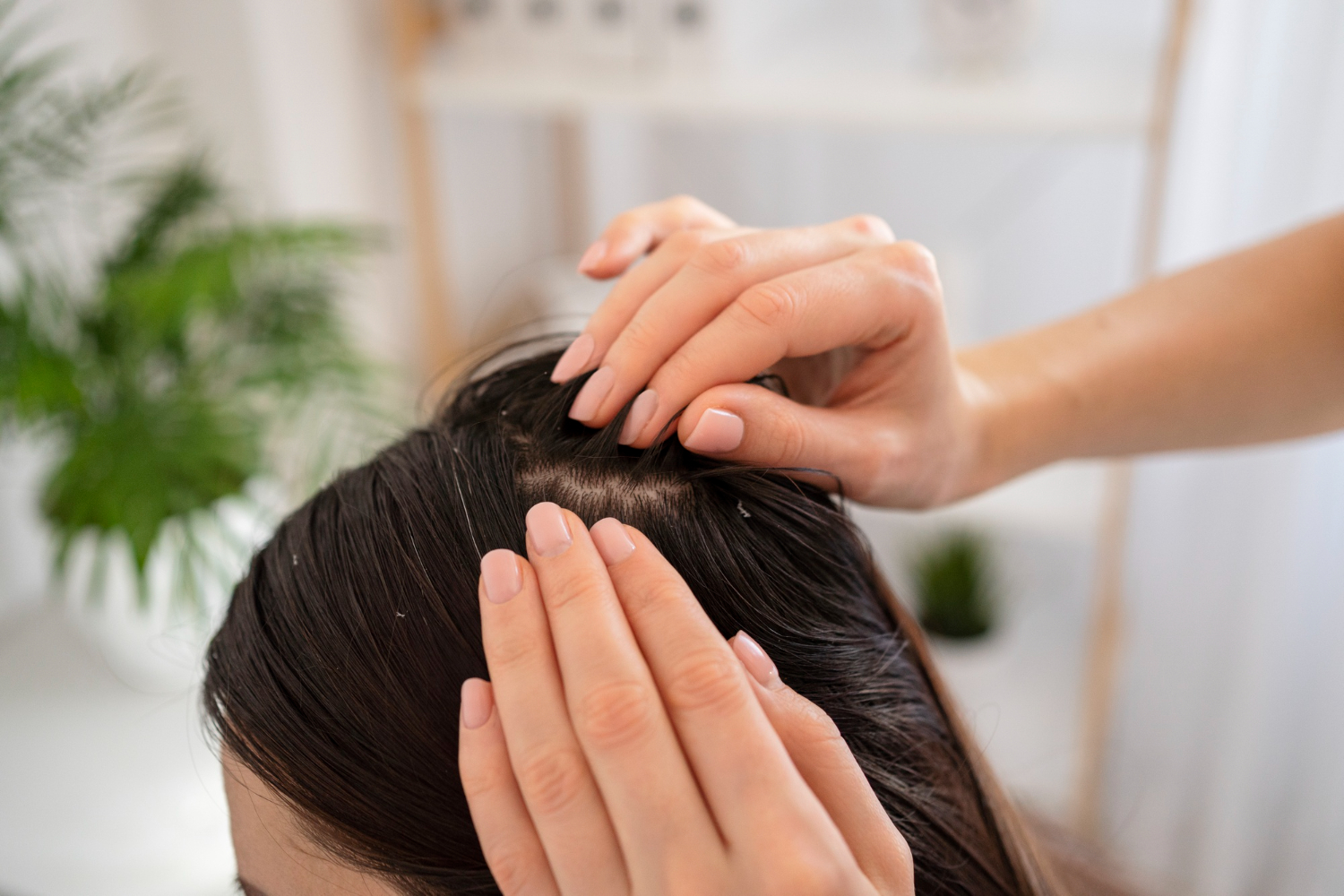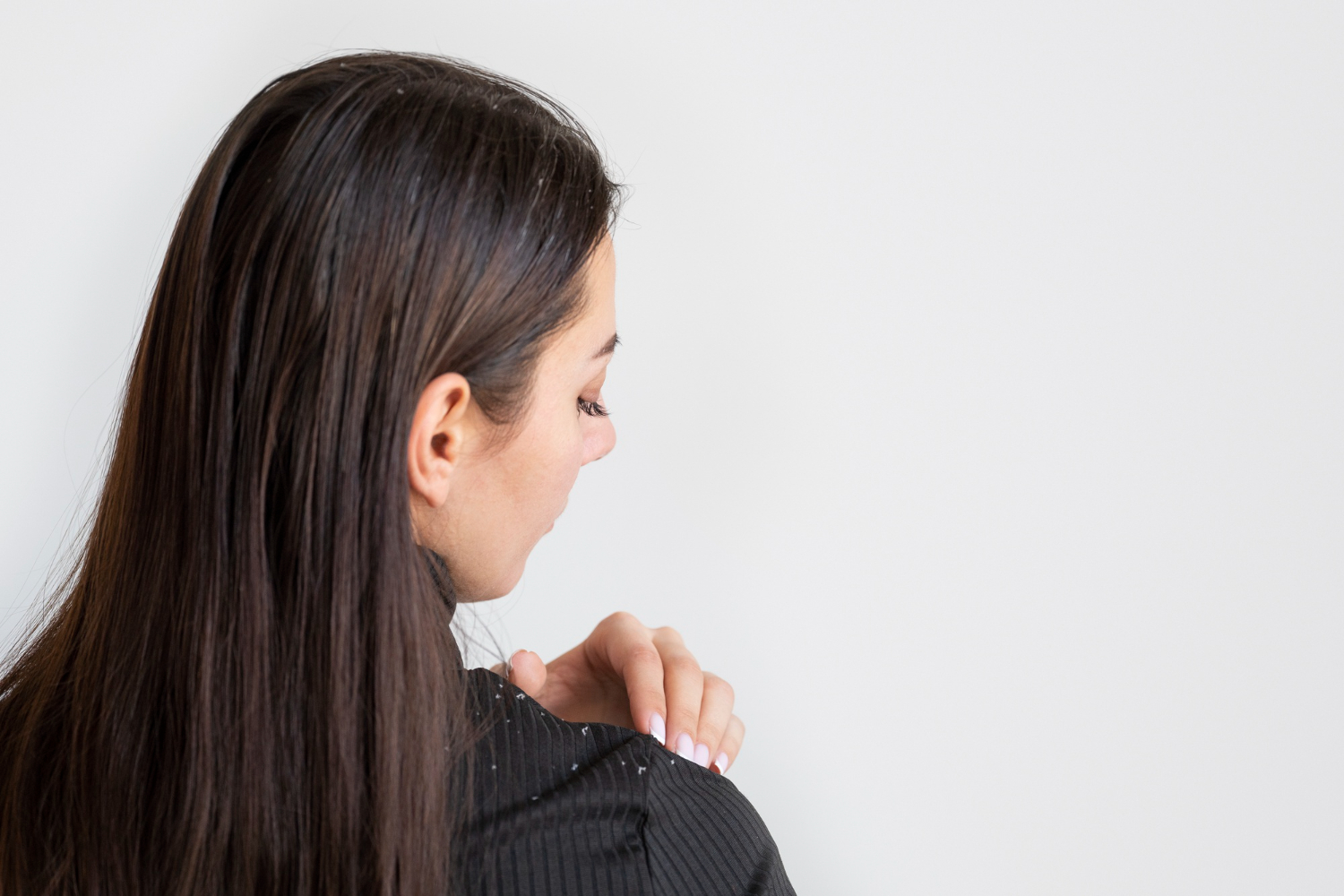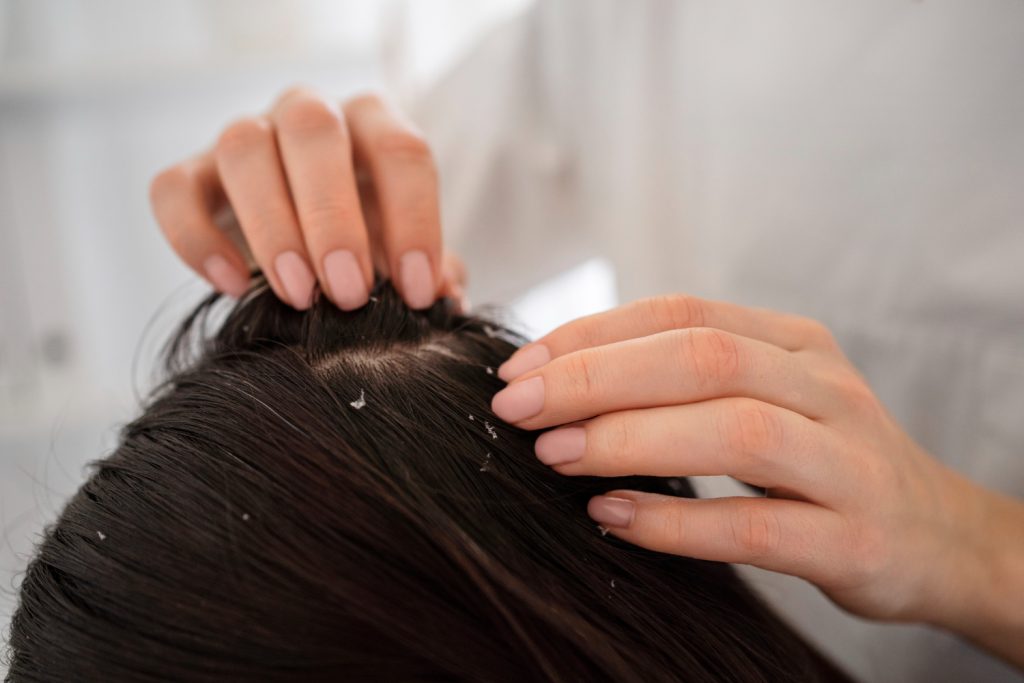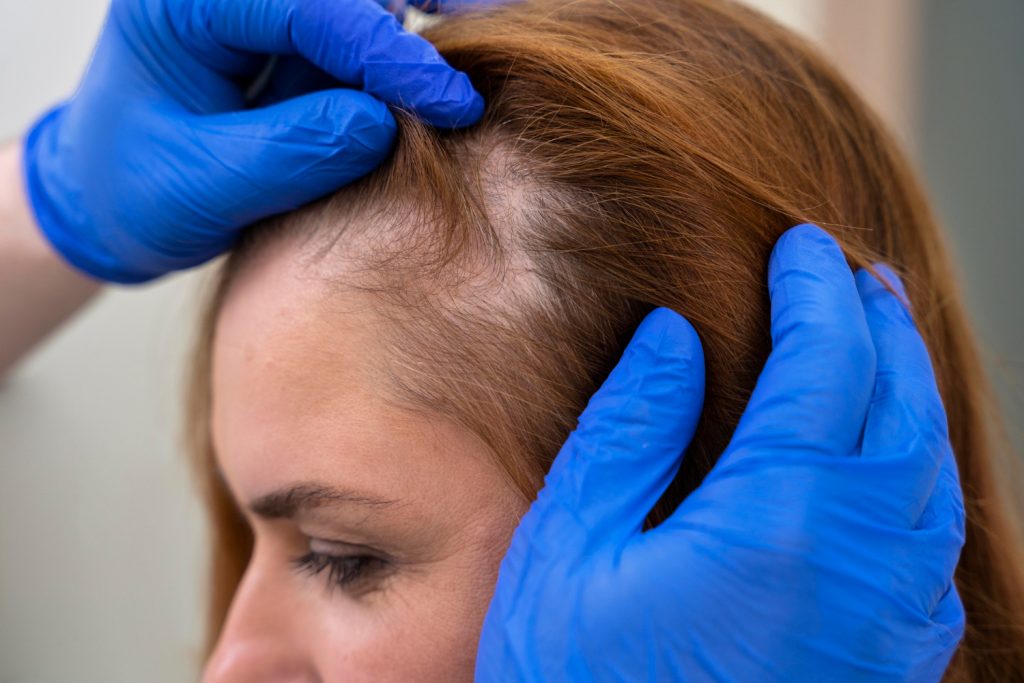

Your scalp is more than just a place for your hair to grow. It plays a crucial role in the overall health and appearance of your hair. A healthy scalp provides the foundation for strong, lustrous hair. It’s important to pay attention to your scalp’s needs to ensure it remains in optimal condition.
Listening to your scalp and recognizing the signs and symptoms of common scalp problems can help you take necessary action before they worsen. By understanding these telltale signs, you can seek appropriate scalp treatments, hair treatments, make lifestyle adjustments, and improve your scalp’s condition.
Dandruff is a common scalp problem characterized by the shedding of dead skin cells from the scalp. It often leads to itchiness and visible white flakes on the hair and shoulders. The causes of dandruff can vary, including dry skin, overactive oil glands, fungal infections, and even sensitivity to certain hair care products.
The telltale signs of dandruff include persistent itching, a dry or greasy scalp, and visible white flakes in your hair and on your clothing. If you notice these symptoms, it’s likely that you’re dealing with dandruff.
While dandruff can be caused by various factors, certain lifestyle choices and habits can exacerbate the condition. Stress, improper hair care, diet, and even weather conditions can contribute to dandruff. By identifying these factors, you can make necessary changes to manage and prevent dandruff.
Several home remedies can help alleviate dandruff symptoms. Tea tree oil, apple cider vinegar, and aloe vera are known for their anti-inflammatory and antifungal properties, which can combat dandruff. Additionally, over-the-counter dandruff shampoos containing active ingredients like zinc pyrithione or ketoconazole can effectively treat dandruff.

Scalp psoriasis is a chronic autoimmune condition that causes the rapid buildup of skin cells on the scalp, leading to red patches, itchiness, and scales. It is not contagious and can vary in severity from person to person. Genetic factors, immune system dysfunction, and environmental triggers can contribute to the development of scalp psoriasis.
The signs of scalp psoriasis include raised, reddish patches covered with silver-white scales on the scalp. It may cause itching, burning sensations, and even temporary hair loss in severe cases. If you notice these symptoms, it’s important to consult a dermatologist for an accurate diagnosis.
A dermatologist can diagnose scalp psoriasis by examining your scalp and taking a medical history. Treatment options for scalp psoriasis include medicated shampoos containing ingredients like salicylic acid or coal tar, topical corticosteroids, and phototherapy. In severe cases, systemic medications may be prescribed.
While there is no cure for scalp psoriasis, certain lifestyle changes can help manage the condition. Regularly moisturizing the scalp, avoiding triggers like stress and cold weather, and practicing stress-reduction techniques can contribute to better scalp health. Additionally, wearing loose-fitting, breathable hats and avoiding harsh hair treatments can minimize scalp irritation.
Seborrheic dermatitis is a common skin condition that primarily affects the scalp but can also impact other areas of the body. It causes redness, itching, and greasy, yellowish scales. The exact cause of seborrheic dermatitis is not known, but factors like yeast overgrowth, hormonal changes, and genetics may contribute to its development.
Seborrheic dermatitis is often characterized by red, inflamed patches on the scalp, along with greasy, yellowish scales that may stick to the hair. It can also affect other areas rich in sebaceous glands, such as the face, ears, and chest. If you experience these symptoms, it’s important to consult a dermatologist for an accurate diagnosis.
The treatment of seborrheic dermatitis aims to reduce inflammation and control the overgrowth of yeast on the scalp. Medicated shampoos containing active ingredients like ketoconazole, selenium sulfide, or zinc pyrithione can effectively manage symptoms. Topical antifungal creams and corticosteroids may also be prescribed for more severe cases.
In addition to using medicated shampoos and topical treatments, there are several steps you can take to manage seborrheic dermatitis in your daily routine. These include gently cleansing your scalp, avoiding excessive use of hair products, maintaining good scalp hygiene, and managing stress levels. It’s also important to note that seborrheic dermatitis is a chronic condition, so long-term management is necessary.
Acne is commonly associated with the face, but it can also affect the scalp. Scalp acne occurs when hair follicles become clogged with oil, dead skin cells, and bacteria, leading to inflammation and the formation of pimples. Hormonal changes, excessive oil production, poor scalp hygiene, and certain hair products can contribute to scalp acne.
The signs of scalp acne include small, red bumps on the scalp that may be tender or itchy. In some cases, the bumps may contain pus and become more prominent when the scalp is touched or when hair is brushed. If you notice these symptoms, it’s important to take steps to address scalp acne and prevent further breakouts.
Scalp treatment for acne involves a combination of topical and oral medications. Medicated shampoos containing ingredients like salicylic acid or benzoyl peroxide can help unclog hair follicles and reduce inflammation. Additionally, your dermatologist may prescribe topical or oral antibiotics, retinoids, or hormonal therapies depending on the severity of the acne.

Hair loss can be a distressing issue, and understanding its connection to scalp health is essential. Various factors can contribute to hair loss, including genetics, hormonal changes, nutritional deficiencies, stress, and scalp conditions. By addressing underlying scalp issues, you can improve the health of your hair and potentially reduce hair loss.
Hair loss can manifest in different ways, including thinning hair, receding hairline, or bald patches. It’s important to pay attention to the signs and patterns of hair loss, as early detection and intervention can often yield better results. If you notice excessive hair shedding or changes in your hair density, consult a dermatologist or trichologist for a thorough evaluation.
The treatment options for hair loss vary depending on the underlying cause and severity. They can include medications like minoxidil or finasteride, hair growth treatments such as platelet-rich plasma (PRP) therapy or laser therapy, or hair transplant procedures. It’s crucial to seek professional advice to determine the most suitable treatment for your specific condition.
A healthy scalp starts with good scalp hygiene. Regularly cleanse your scalp, use gentle hair care products, and maintain a balanced diet to nourish your hair follicles. Additionally, managing stress levels and practicing self-care can significantly contribute to a healthy scalp environment.


